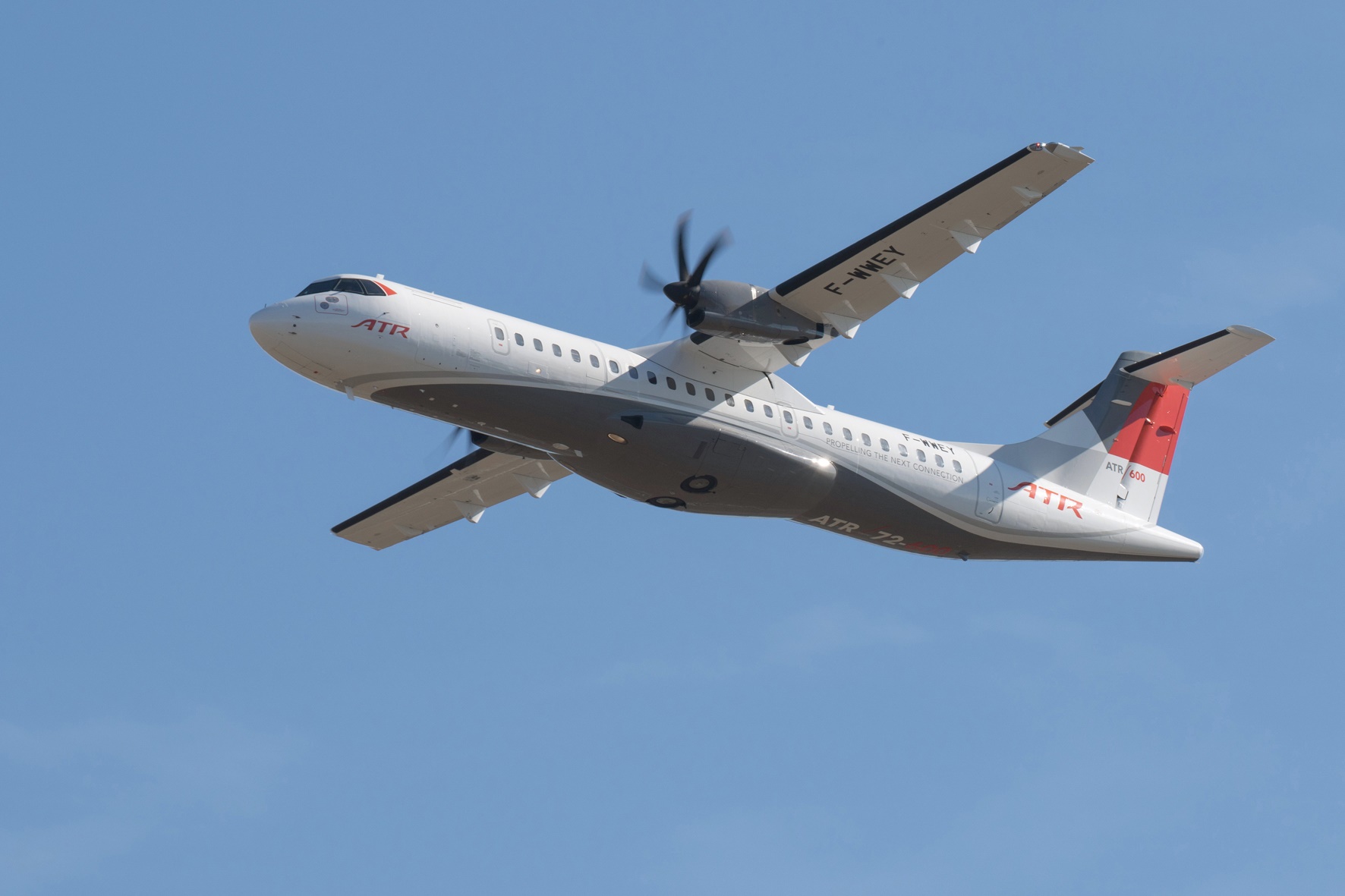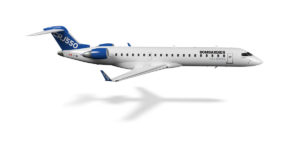Leeham News and Analysis
There's more to real news than a news release.
Looking ahead for 2020 and 2030 decades: ATR & De Havilland Canada
Subscription Required
Seventh and final in a series.
By Judson Rollins
Introduction
Jet manufacturers typically introduce a new airplane every 15 years or so.
Commercial turboprops have not innovated to nearly the same extent as jets, with rival manufacturers ATR and De Havilland Canada (and predecessor Bombardier) having produced nearly 95% of the world’s in-service fleet. Although order volume has slowed in recent years, more than 300 aircraft are still on order.
Both manufacturers sell aircraft based on 30+ year old designs. However, the market’s size is probably capped because of turboprops’ relatively low cruise altitude and speed, making them limited alternatives to regional jets beyond roughly 500nm. This limits the return on investment from a clean-sheet design, either from aerodynamic improvements or the use of carbon composites.
Emerging threats lie on the horizon as China’s Xian MA700 nears its first flight and Embraer deliberates re-entering the market with a new design. Given sufficient market acceptance, either would constitute a significant threat not only to ATR and DHC, but potentially also the smaller end of the regional jet market.
 Summary
Summary
- ATR has a commanding share of the market; access to Airbus resources adds to ATR’s ability to win future business.
- DHC’s dwindling order book and high production costs limit its ability to compete.
- Old designs leave the turboprop space ripe for disruption; Embraer may re-enter the market with a clean-sheet design.
Looking ahead for 2020 and 2030 decades: Mitsubishi
Sixth in a Series
Subscription Required
By Scott Hamilton
July 23, 2020, © Leeham News: The Mitsubishi Aircraft (MITAC) SpaceJet program is in limbo.
MITAC parent Mitsubishi Heavy Industries (MHI) suspended development of the M100 SpaceJet in the wake of the COVID-19 crisis. Customers are suppliers are in the dark about this program’s future.
suppliers are in the dark about this program’s future.
MHI continues to complete certification of the M90 SpaceJet, which is simply the rebranded MRJ90. But, as LNA previously wrote, the M90 is at an economic disadvantage to the competing Embraer E-Jets.
The planned entry-into-service for the M90 is next year. However, certification process by the Japanese regulator is slow. The impact by COVID on the certification process and EIS remains to be seen.
Summary
- M100 program on hold at least until next year.
- What’s next for MHI?
- Strengths, Weaknesses, Opportunities and Threats
HOTR: Second hand 787-8 market to be tested
By the Leeham News Staff
July 10, 2020, (c) 2020, Leeham News: A few months ago, Qantas announced that it intended to sell three Jetstar-operated Boeing 787-8s that would become surplus once the airline received its first A321-LRs. In the aftermath of the COVID-19 outbreak, Avianca rejected one 787-8 lease and Royal Air Maroc intends to sell four of them.
Four 787-8 operators (Aeromexico, Avianca, Latam Airlines, and Thai Airways) with a total of 38 aircraft in service filed for Chapter 11 or are in administration. This represents around 11% of the 374 787-8s delivered so far.
After years of high 787-8 production rates, Boeing is reluctant to sell the type. It has less production commonality than the 787-9 and 787-10 have between them and sales margins are lower. As a result, airlines do not place many new orders for the variant because they think other aircraft are more attractive investments.
How much life is left in the Boeing 737 MAX after recertification?
Subscription Required
By Scott Hamilton
Introduction
June 29, 2020, © Leeham News: As Boeing narrows in on recertification of the 737 MAX, one of the questions that is unanswered, but forward-reaching is, how much life is left in the airplane?
In this context, the question is not about “useful life.” This is the length of time an airplane can economically be in service before passenger carriers retire the aircraft. Then there is the potential as a cargo conversion airplane. The useful life may equal or exceed the useful life as a passenger airplane.
How much life is left in the MAX in this context means how long will it be before Boeing pursues a replacement design—and how long will MAX remain in production?
Summary
- 737NG program launched in November 1993. EIS: December 1997. Production ended late 2019.
- 737 MAX program launch, July 2011. EIS: May 2017. Boeing contract with Spirit Aerosystems for fuselages extends to 2033.
- A321XLR, MAX grounding killed NMA.
Looking ahead for 2020 and 2030 decades: Boeing
Subscription Required
Second in a series.
By Scott Hamilton and Vincent Valery
Introduction
June 24, 2020, © Leeham News: “Airbus’ widebody strategy is a mess.”
This is what Kostya Zolotusky, then a VP with Boeing Capital Corp., said a few years ago on the sidelines of a major aerospace conference.
Today, it may be going too far to say there is increasing opinion in the industry that Boeing’s product strategy is a mess. But it’s fair to say it’s seriously challenged.
Even setting aside the 737 MAX grounding, Airbus clearly outpaced the MAX with the A320neo family. The A321LR and XLR thrust Airbus into dominance in the single-aisle, 150-220 seat sector.
Airbus fell into a winner with the acquisition of the Bombardier C Series. Boeing’s 737-7 MAX has captured fewer than 100 orders since the program launch in 2011. Demand for the 777X is weak.
Boeing critics, and there are many, see little but doom and gloom ahead. Even before the COVID-19 crisis, Boeing faced years of recovery from the MAX grounding.
There’s no doubt Boeing has a deep hole to climb out of, exacerbated by the COVID crisis. The question is, what does Boeing do after the MAX is returned to service and the virus crisis is over?
Summary
- Airbus is clear leader in single-aisle sector.
- Boeing’s product strategy for New Midmarket Airplane, Embraer role is over.
- Former CEO Jim McNerney said, “no more moonshots.” But is this just what Boeing needs to regain its position?
Embraer’s Slattery named CEO of GE Aviation
By Scott Hamilton
June 15, 2020, © Leeham News: John Slattery, the CEO of Embraer Commercial Aviation, was named CEO of GE Aviation, it was announced today.
Arjan Meijer is the new President and CEO succeeding Slattery. Slattery succeeds David Joyce, who is retiring. Slattery’s appointment is effective July 13.
Slattery devoted much of the last year trying to win approval of the proposed Boeing-Embraer joint venture, Boeing Brasil-Commercial. Boeing terminated the agreement April 25, claiming Embraer failed to meet all required terms and conditions. Embraer claims it met the conditions. Both took the dispute to arbitration.
Slattery had been designated CEO of Boeing Brasil. After the deal’s collapse, his departure from Embraer was expected.







